Maximizing Group Calendar Availability: Best Practices and Tools
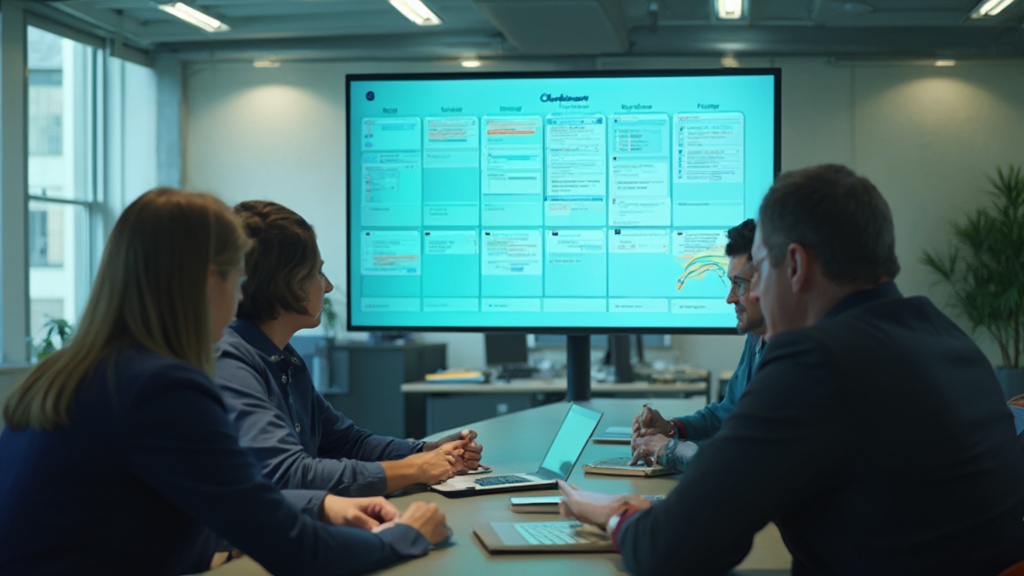
Introduction
In the fast-paced world of modern work, effective group calendar management can be a game-changer for productivity and collaboration. When schedules are streamlined and synchronized, teams can avoid the chaos of missed meetings and conflicting appointments, paving the way for a more harmonious and efficient work environment. From boosting visibility and accountability, as seen with Dynatrace’s shared calendar system, to ensuring balanced workloads with Twinkl’s use of Toggl Track, integrating these tools can lead to happier, more productive teams.
The rise of collaboration software like Microsoft Teams and Slack underscores the importance of integrated tools to support remote work. Such platforms not only keep communication secure and reliable but also help teams stay connected and focused on their priorities. By adopting these strategies and tools, organizations can cultivate a more organized, synchronized workflow where everyone is aligned with the company’s goals and contributing to the team’s success.
Benefits of Effective Group Calendar Management
Effectively overseeing group availability using a communal schedule can greatly enhance productivity and teamwork among teams. When schedules are synchronized, it drastically reduces misunderstandings and scheduling conflicts, leading to a more cohesive work environment. For instance, Stephen at Dynatrace utilizes shared calendars to add ideas to his meetings, enhancing visibility and accountability across the organization. This approach has not only fostered a culture of trust but has also streamlined project execution by ensuring everyone is aligned with the company’s objectives.
Likewise, the Twinkl group utilizes resources such as Toggl Track to effectively distribute assignments, ensuring that no individual is overburdened while others are underused. This method has led to happier, more productive teams that consistently meet expectations. Visual project management resources, such as Manufacturing Production Schedules (MPS), also play a crucial role in providing real-time status updates, allowing all stakeholders to stay informed about project progress and potential risks.
Furthermore, the rising use of collaboration software such as Microsoft Teams and Slack underscores the increasing demand for integrated resources that enable remote work. These platforms have become essential for maintaining secure and reliable communication, ultimately aiding groups in staying connected and productive. As Christina Janzer from Slack notes, addressing the root problems in meetings can lead to significant improvements in focus and priority management, as evidenced by Atlassian’s experiment which resulted in a 32% improvement in focus and 31% more progress on top priorities.
By utilizing these tools and strategies, organizations can create a more synchronized and efficient workflow, ensuring that everyone is on the same page and contributing to the overall success of the group.
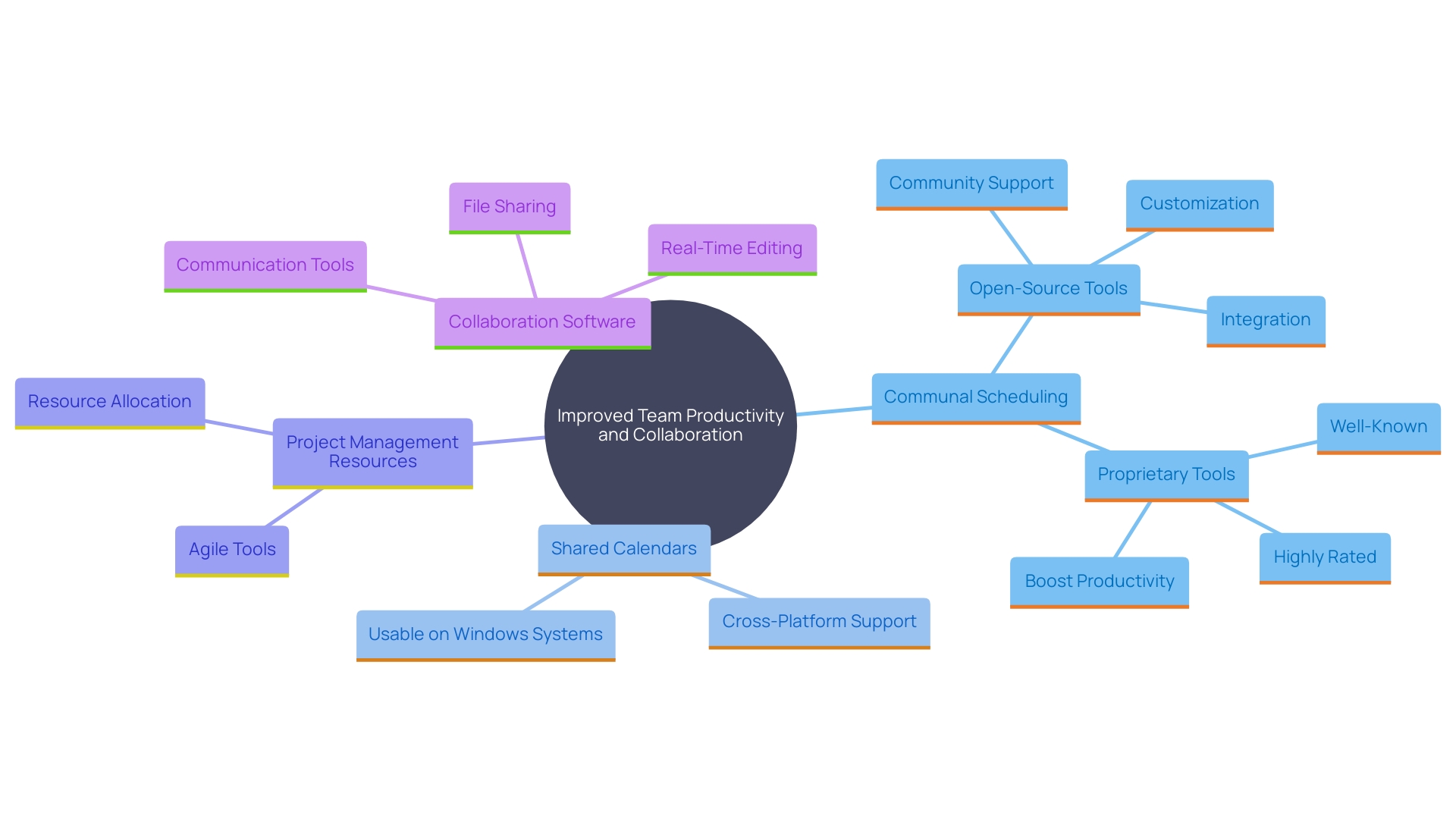
Best Practices for Group Calendar Scheduling
Enhancing the efficiency of group scheduling relies on prioritizing time by setting aside dedicated work periods. Setting clear boundaries around availability helps prevent interruptions, while scheduling focus time ensures team members have uninterrupted periods to tackle crucial tasks. An experiment at Atlassian’s Team Anywhere Lab found that employees who blocked 30 to 40 percent of their week for focus time reported a 32 percent improvement in focus and 31 percent more progress on top priorities. Automating scheduling processes can streamline operations, and utilizing a planner for task management adds an extra layer of organization. For instance, integrating task management with Google Calendar allows users to create tasks, add details, and set reminders in the same window. Regularly reviewing and adjusting scheduling practices to adapt to changing needs is essential. Cal.com users benefit from customizable routing forms that simplify the booking process, ensuring that meetings are efficiently scheduled.
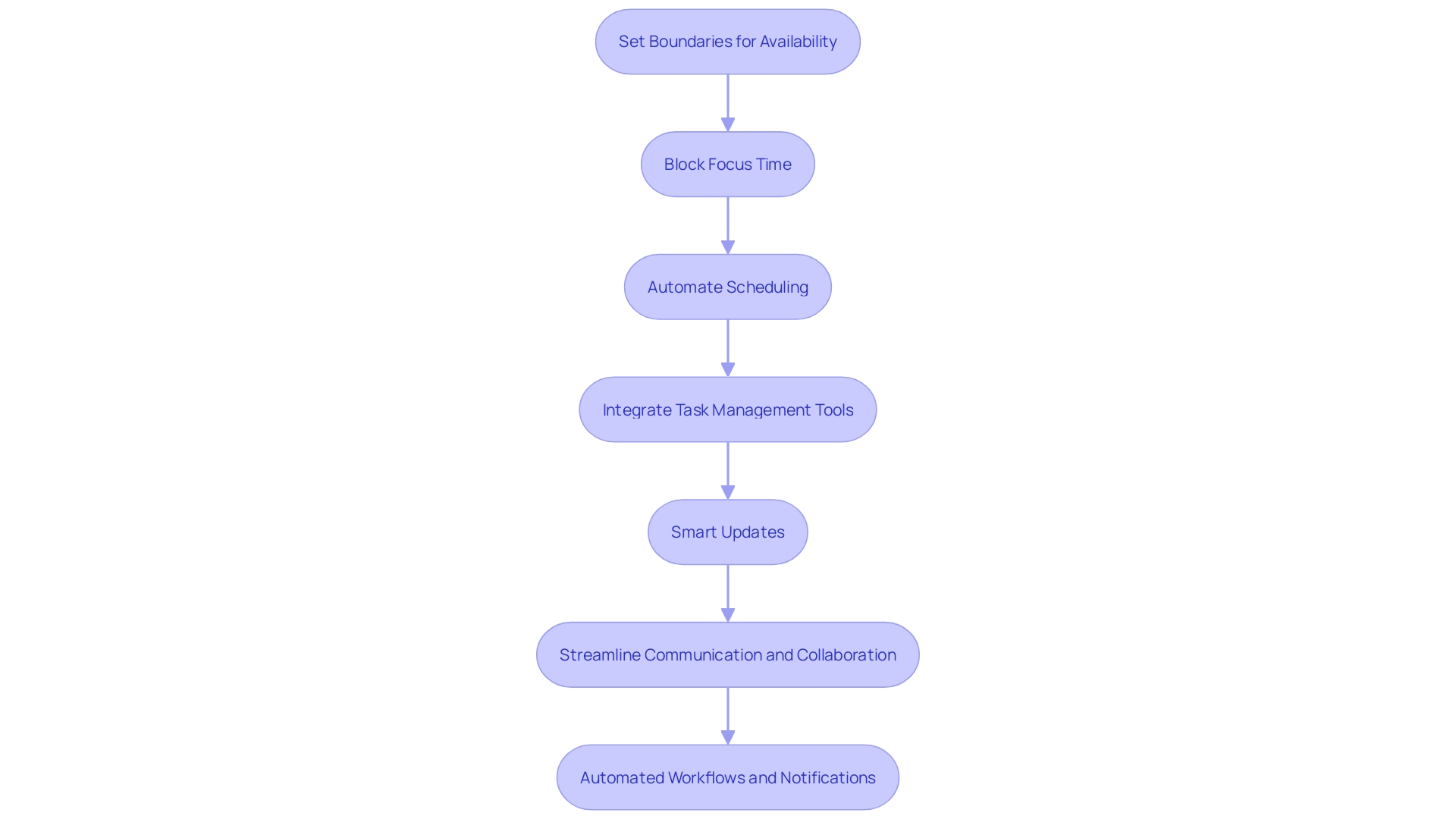
Top Tools for Group Calendar Scheduling
Simplifying group scheduling management is crucial for avoiding conflicts and ensuring efficient use of time. Here are some standout tools that can make this task easier:
- Calendly: Perfect for setting up meetings without the endless back-and-forth emails. It integrates seamlessly with Google and Outlook schedules, allowing participants to choose a mutually available time.
- Doodle: Ideal for finding the best times for group gatherings. It simplifies the process of coordinating schedules, especially when dealing with multiple participants across different time zones.
- Teamup Calendar: This tool excels in easy sharing and collaboration among groups. It enables team members to access and modify shared schedules, minimizing the inconvenience of manual planning.
- Acuity Scheduling: Offers advanced features like client booking and customizable routing forms, making it a robust option for businesses that need more than just basic scheduling functionalities.
- Fantastical: Merges scheduling functionalities with task management, making it a versatile option for those who need an all-in-one solution. Its intuitive interface and powerful features make it a favorite among users.
An experiment at Atlassian highlighted the importance of efficient scheduling, showing a 32% improvement in focus and 31% more progress on top priorities when meeting times were managed effectively. In today’s mixed work setting, resources like these can greatly simplify schedule management and improve efficiency.
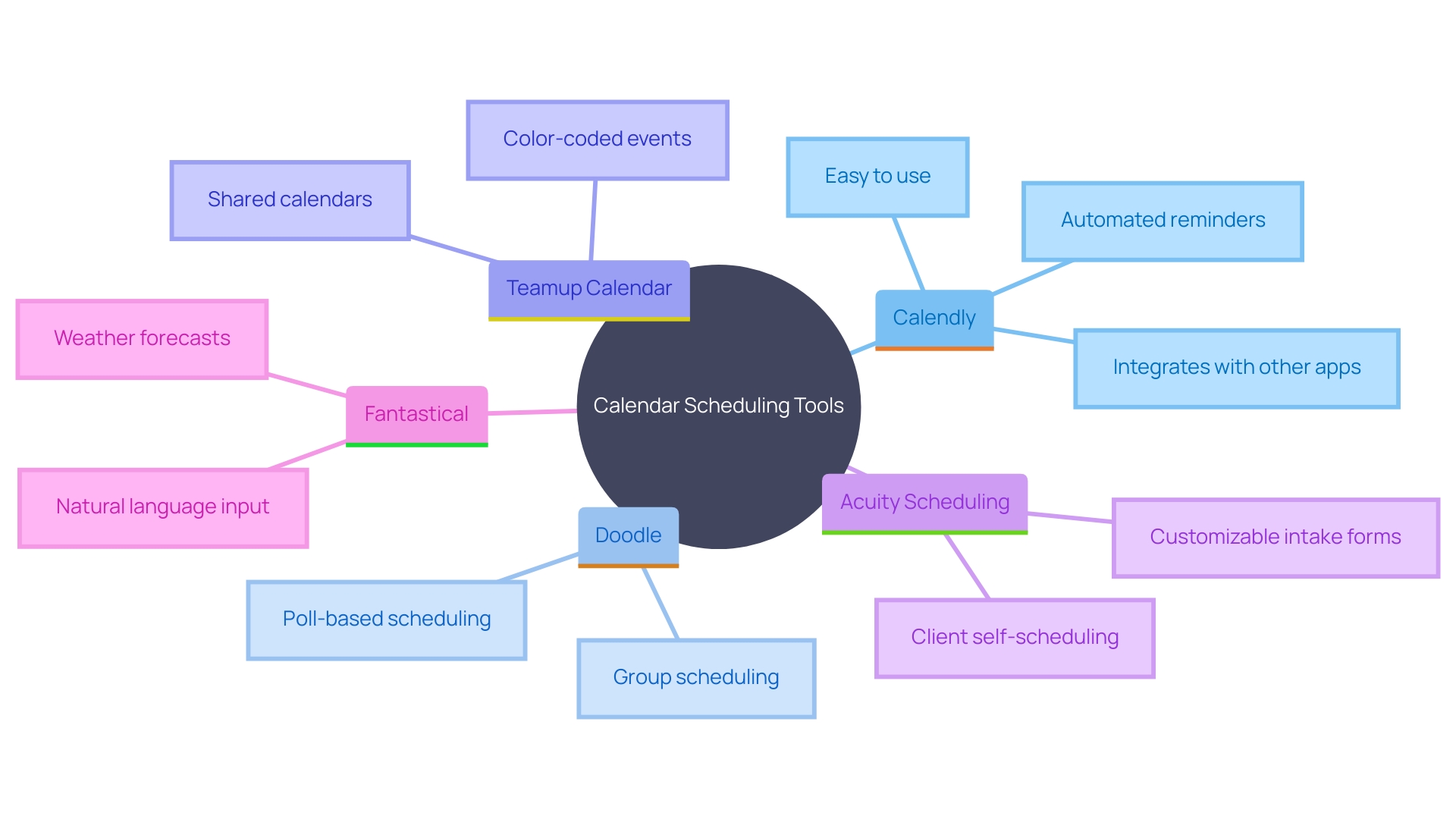
Integrating Group Calendar Scheduling with Other Tools
Combining your group’s scheduling system with additional resources is crucial for establishing a smooth workflow. Numerous scheduling applications provide connections with task management software, email services, and communication tools. This connectivity ensures that all group members are kept informed and can access necessary resources promptly, enhancing overall efficiency and collaboration.
For instance, utilizing Gantt charts combined with calendar applications enables managers to visualize schedules and monitor progress dynamically. Tools like Schedules make Gantt charts interactive and easily integrable into web applications, providing a comprehensive view of task dependencies and timelines. This level of integration assists in managing endeavors of any complexity by organizing tasks, assigning team members, setting deadlines, and tracking workload with ease.
Furthermore, utilizing cloud-based management solutions can greatly improve real-time cooperation. According to a Gartner report, over 85% of companies using these tools reported faster project delivery times due to instant updates and centralized data management. This means fewer delays and better alignment among team members, regardless of their location.
Incorporating personal scheduling features like those offered by Leantime, which integrates with personal calendars, further streamlines task management. Users can arrange tasks by time, establish priorities using methods like Pomodoro, and even visually oversee assignments. This approach not only improves individual productivity but also ensures that team members are operating efficiently.
Overall, the key to successful project management lies in selecting resources that align with your workflow, enhance collaboration, and provide the necessary features to keep your projects on track. Integrating your group calendar with these tools is a step towards achieving this goal.
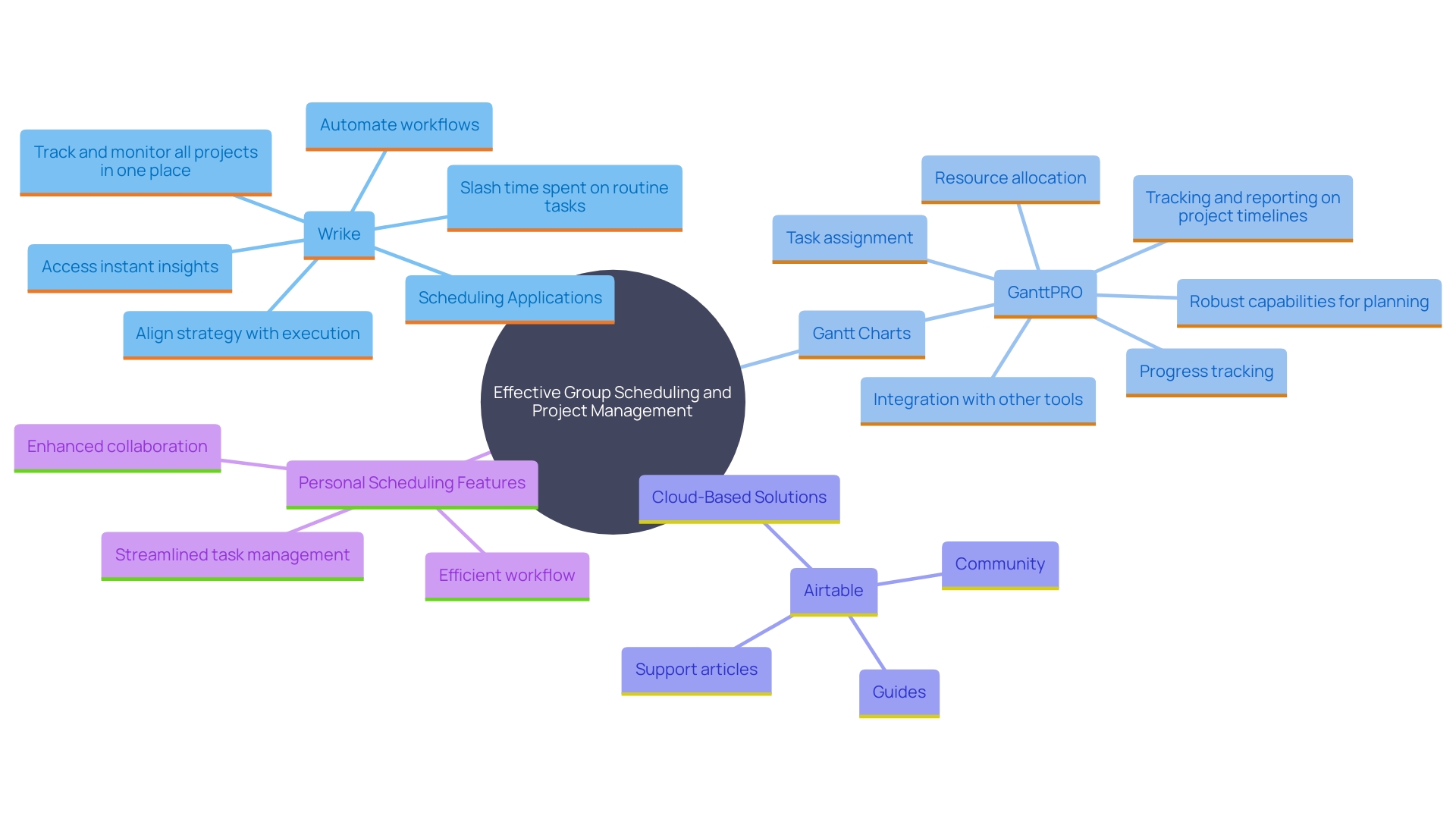
Conclusion
Effective group calendar management is not just a trend; it’s a vital strategy for enhancing productivity and collaboration within teams. By synchronizing schedules, organizations can minimize misunderstandings and scheduling conflicts, creating a more cohesive work environment. Tools like shared calendars and task management integrations have proven to foster trust and accountability, as demonstrated by companies like Dynatrace and Twinkl.
These practices not only streamline project execution but also contribute to happier, more engaged teams.
Adopting best practices in group calendar scheduling, such as blocking out focus time and automating scheduling processes, can lead to significant improvements in productivity. The use of tools like Calendly, Doodle, and Acuity Scheduling simplifies the scheduling process, ensuring that meetings are set efficiently without the hassle of endless emails. The data from Atlassian’s experiments underscores the importance of effective scheduling, revealing substantial gains in focus and progress when time is managed wisely.
Furthermore, integrating group calendars with other tools enhances overall workflow and project management. By connecting calendars with project management and communication platforms, teams can maintain alignment and access vital resources swiftly. This interconnectedness not only streamlines operations but also fosters real-time collaboration, leading to faster project delivery times.
Ultimately, investing in effective group calendar management and the right tools can pave the way for a more organized, productive, and successful team environment.
Transform your team’s productivity today! Download our smart extension to streamline communication and scheduling effortlessly.
